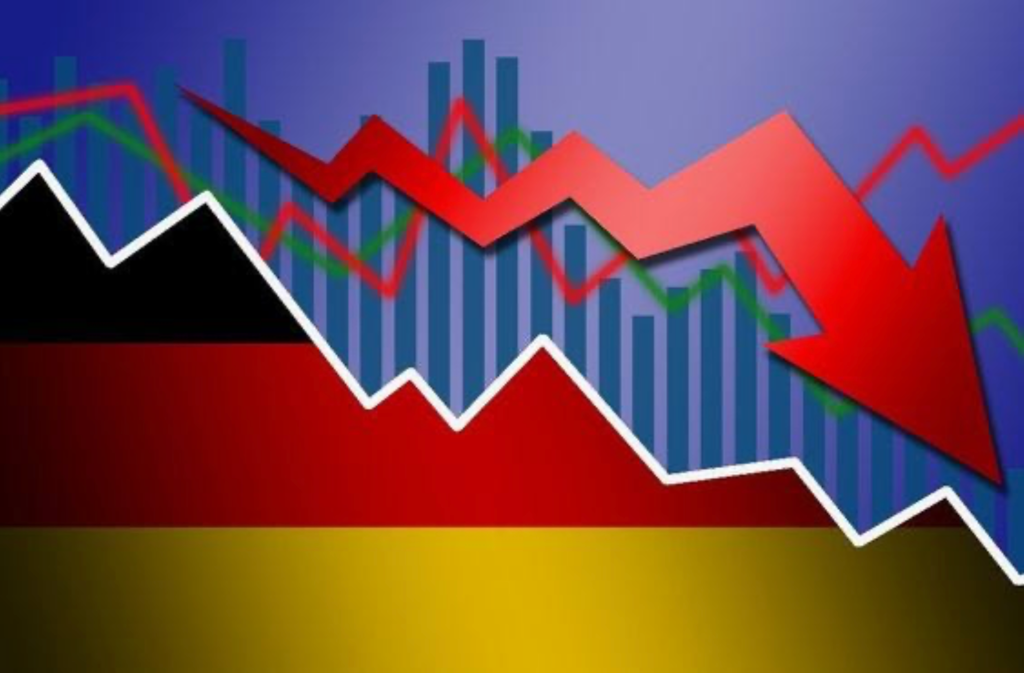By: Rithik Tangella
What is Ethanol and Why it Truly Does Matter Today more than Ever?
Ethanol has recently garnered national news coverage due to the Trump administration’s controversial decision to lift restrictions on E15 gasoline sales, which was previously barred from being sold during the summertime. This move permits gas stations across the country to sell gasoline blends of up to 15% ethanol per gallon of gasoline, also known as “E15”. The approval of E15 sales has angered oil companies, as they must now increase the percent of ethanol blended into gasoline, decreasing their overall margins per gallon of gasoline. However, this action provides necessary palliative relief to farmers of the Midwest to the Great Plains, who are embroiled in the trade war between the U.S and China. In efforts to prioritize American trade interests, the Trump administration has decided to hit back against the alleged “unfair trading trading practices” perpetuated by China, by placing tariffs on $200 billion worth of Chinese products. China, not one to keep quiet, hit back with retaliatory tariffs worth approximately $60 billion (BBC). One of the affected products is ethanol. Agriculturists constitute a significant portion of Trump’s base; therefore, the issue of ethanol has become far more significant, especially in today’s turbulent era concerning the environment and economic sustainability, making gasoline consumption an important factor to consider. Against the backdrop of rising awareness of the existential threat climate change poses, Americans are more than ever urgently questioning both the long-term consequences of continued gasoline combustion and the possibility of viable greener alternatives.

While a complete diametric shift to green technology is currently unrealistic, incremental steps towards that future must be undertaken soon. One of these steps should be the mass utilization of ethanol for vehicular consumption, as currently less than 4% of the world’s motor vehicles utilize biofuels (Nunez). To quantify current gasoline usage, American motorists use 391 million gallons of gasoline every day, which constitutes the largest single majority use of gasoline compared to other uses. The approximately 270 million cars in the United States and their gasoline consumption significantly increases net CO2 emissions (EIA). The current large usage and dependence of motor vehicles opens an avenue towards incremental change of a greener future, which could potentially revolve around altering gasoline consumption.
Ethanol Explained
Biofuel is the general term for alternative fuels derived from sustainable organic matter, which is mostly plant matter. The most common biofuel available in the United States is ethanol, which is primarily derived from corn. There are a myriad of ways to create biofuel, but they usually consist of fermenting organic material in heat to break down particles. This process yields a fuel-like product. While corn is mainly used for this in the United States, other organic plants with a high oil concentration can also be used.

https://www.reuters.com/article/us-usa-ethanol-corn/ethanol-to-take-30-pct-of-u-s-corn-crop-in-2012-gao-idUSN1149215820070611
Ethanol presents a unique opportunity to address both climate concerns and our severe oil dependency. Transportation single-handedly accounts for 29% of direct carbon emissions (EPA). Motor vehicles utilize petroleum, which results in the emissions of CO2 (a greenhouse gas partly responsible for global warming). Using ethanol to fuel vehicles would significantly reduce greenhouse gas emissions. Studies indicate that biofuel utilization has the potential of reducing carbon emissions from gasoline by anywhere from 19% to 48%, which is enough to incrementally stave off the potentially negative effects of climate change (Wang).
Resolutional Analysis
From a rational consumer’s standpoint, the price and quantity of a good are the two primary drivers in commodity selection. When presented with options like electric cars or industry standard gas powered cars, the substitution effect is clearly observed as a majority of consumers purchase the cheaper option: gas powered vehicles. The line graph below shows the price variance between industry-standard and electric vehicle (EV) throughout 2019.
Price of Vehicle Type vs Month

Img URL:qz.com/1695602/the-average-electric-vehicle-is-getting-cheaper-in-the-us/
The Balance reported the median American income to be $47,060 in the first quarter of 2019 ; thus, at the current price point and level of technology today, the cost of electrical vehicles and mass utilization of it overburdens the average American household with significantly more financial strain as the price of electrical vehicles are approximately 70% costlier on average (Coren). This same logic is prevalent at the gas station pump, which makes a method in fostering synergy between environmental progressivism and realistic consumer behavior all the more significant. Ethanol blended gasoline presents itself as a current solution as it pairs fiscal and environmental concerns together; however, to appropriately gauge it as a viable option with realistic accuracy, we must ask ourselves the following questions when making decisions about ethanol usage in the future:
- How will ethanol financially affect certain groups?
- Does current technology permit mass utilization?
Ethanol blending potentially helps us solve the increasingly important question of
“How can we effectively combat CO2 emissions, while at the same time be realistic with current world needs?”.
First, there are there are primarily four pertinent parties that are affected by ethanol: farmers, consumers, oil refineries, and the government. Currently, the United States stands as the largest corn producer in the entire world, producing approximately 367 million metric tons during the 2018-2019 growing season (Kopp). Approximately 40% of the total corn yield of America is used towards ethanol production (Foley). However, with recent international trade tensions, particularly with China, the overall trade dynamic has faulted as import tariffs on corn and ethanol have been placed, heavily decreasing demand, especially since there is currently a 45% Chinese import tariff on ethanol (Hubbs). Farmers of the Midwest to Great Plain corn belt are particularly hit hard by these tariffs because the market price of ethanol decreases to meet demand, which results in lower profit margins as their costs are mostly fixed.

https://www.agmrc.org/renewable-energy/renewable-energy-climate-change-report/renewable-energy-climate-change-report/april-2017-report/us-ethanol-production-consumption-and-the-relevance-of-increasing-exports
As represented in the chart above, supply has consistently outpaced the overall demand of ethanol which creates a supply surplus in the short run, applying downward pressure on market equilibrium towards a lower price to match the lowered demand. While the United States government has recently passed year round Ethanol 15% (E15) sales, this boon to farmers was short lived as 85 oil refineries were granted blending waivers, which circumvents the requirement to blend required amounts of ethanol with gasoline. The total amount of ethanol that was lost with these waivers are approximated at 4 billion gallons. The effects of these waivers and trade tensions were twofold: already 15 ethanol refineries were forced to shut down or stay idle and an overall sense of uncertainty has clouded farmers minds as the current future of ethanol seems precarious (Karnowski). On the direct to consumer level, a lower price per gallon of gasoline is received when ethanol is blended, due to the lower price of ethanol per gallon. For example, at a 2014 data point, the regular unleaded gallon of gasoline costs on average approximately $3.75, while a 15% blend with ethanol costs $3.385 (Simmons). The perceived decrease in cost to the average consumer helps make ethanol blended gasoline a viable option towards a more eco-friendly future.
The Controversy
While the solution to solving climate change and the increasing rates of energy consumption in the United States is not immediately obvious, we will move in the right direction with the strategic use of biofuel. However, some argue that the miles per gallon output is lower with ethanol than gasoline, making it potentially costlier in the long run. For instance, according to the U.S Department of Energy, E15 usage outputs 4%-5% less miles per gallon than 100% gasoline . Additionally, the use of corn as a primary input has been widely debated due to concerns regarding it being a food item. Since corn is also a valuable food crop and its largest use being producing ethanol instead of feeding the population, many are starting to question its primary use. Currently, about 99% of ethanol in the world primarily uses a food crop, so a shift away from using food valuable food items is necessary (Nunez). Additionally, some scientists debate the use of corn as an input due to its efficiency of CO2 reduction compared to other plant bases, which has started the search for cellulosic ethanol inputs. Cellulosic ethanol is a biofuel that utilizes the plants cellulose, or base, rather than the actual seed or fruit. While the research into this field is relatively novel, it would definitely help alleviate the controversy coupled with conventional ethanol, such as finding high mile-per-gallon plant inputs or more efficient production processes. Also, the potential incorporation of waste products such as waste wood, which accounts for approximately 8% of all landfilled items, could significantly improve the recycling and re-utilization of natural resources (EPA). Although there is no general consensus on using corn specifically as the primary feed for biofuel, the use of biofuels, especially cellulosic ethanol, is definitely a right step towards transitioning to an economically greener and sustainable future.
Works Cited:
EIA. “U.S. Energy Information Administration – EIA – Independent Statistics and Analysis.” Use of Oil – U.S. Energy Information Administration (EIA), 2019, www.eia.gov/energyexplained/oil-and-petroleum-products/use-of-oil.php.
“A Quick Guide to the US-China Trade War.” BBC News, BBC, 2 Sept. 2019, www.bbc.com/news/business-45899310.
EIA. “U.S. Energy Information Administration – EIA – Independent Statistics and Analysis.” Use of Gasoline – U.S. Energy Information Administration (EIA), 2019, www.eia.gov/energyexplained/gasoline/use-of-gasoline.php.
Pamuk, Humeyra. “Trump Lifts Curbs on E15 Gasoline to Help Farmers, Angering Big Oil.” Reuters, Thomson Reuters, 31 May 2019, www.reuters.com/article/us-usa-biofuels-ethanol/trump-lifts-curbs-on-e15-gasoline-to-help-farmers-angering-big-oil-idUSKCN1T11BN.
EPA. “Sources of Greenhouse Gas Emissions.” EPA, Environmental Protection Agency, 13 Sept. 2019, www.epa.gov/ghgemissions/sources-greenhouse-gas-emissions.
Wang, Michael, et al. “Well-to-Wheels Energy Use and Greenhouse Gas Emissions of Ethanol From Corn, Sugarcane, and Cellulosic Biomass for US Use: Well-to-Wheels Energy Use and Greenhouse Gas Emissions of Ethanol From Corn, Sugarcane, and Cellulosic Biomass for US Use.” Efficiency and Sustainability in Biofuel Production, 2015, pp. 249–279., doi:10.1201/b18466-13.
Karnowski, Steve, and Scott Mcfetridge. “Farmers’ Loyalty to Trump Tested over New Corn-Ethanol Rules.” AP NEWS, Associated Press, 29 Aug. 2019, www.apnews.com/63343a1c5866403ab7c5e06abbd0e202.
Hubbs, Todd. “Corn Amounts Used for Ethanol Challenged.” Successful Farming, Successful Farming, 29 Apr. 2019, www.agriculture.com/markets/analysis/corn-amounts-used-for-ethanol-challenged.
Foley, Jonathan. “It’s Time to Rethink America’s Corn System.” Scientific American, 5 Mar. 2013, www.scientificamerican.com/article/time-to-rethink-corn/.
“2018 U.S Ethanol Exports and Imports, Statistical Summary.” 2018-US-Ethanol, Renewable Fuels Association, 2018, ethanolrfa.org/wp-content/uploads/2019/03/2018-US-Ethanol-Trade-Statistics-Summary.pdf.
Kopp, Carol. “The World’s 6 Biggest Corn Producers.” Investopedia, Investopedia, 14 Oct. 2019, www.investopedia.com/articles/markets-economy/090316/6-countries-produce-most-corn.asp.
Nunez, Christina. “Biofuels, Explained.” Biofuels, from Ethanol to Biodiesel, Facts and Information, 15 July 2019, www.nationalgeographic.com/environment/global-warming/biofuel/.
“Wood: Material-Specific Data.” EPA, Environmental Protection Agency, 7 May 2019, www.epa.gov/facts-and-figures-about-materials-waste-and-recycling/wood-material-specific-data.
Simmons, Dan. “Is Ethanol Cheaper Than Gasoline?” American Energy Alliance, 23 Feb. 2015, www.americanenergyalliance.org/2012/08/is-ethanol-cheaper-than-gasoline/.
Coren, Michael J. “The Median Electric Car in the US Is Getting Cheaper.” Quartz, Quartz, 6 Sept. 2019, qz.com/1695602/the-average-electric-vehicle-is-getting-cheaper-in-the-us/.
“Ethanol.” Www.fueleconomy.gov – the Official Government Source for Fuel Economy Information, www.fueleconomy.gov/feg/ethanol.shtml.






Leave a comment